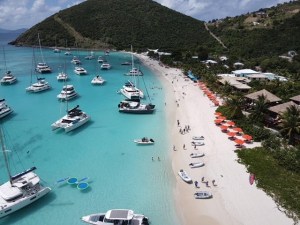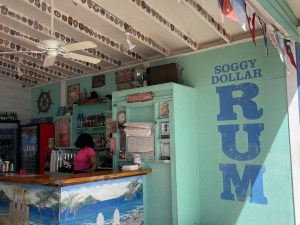Jost Van Dyke: Caribbean Jewel, Pirate Haven, and Island Paradise
Jost Van Dyke, a gem nestled in the embrace of the Caribbean Sea, boasts a history as rich and vibrant as its azure waters and powdery beaches. From its ancient indigenous inhabitants to the modern-day allure of tourism, the island’s narrative weaves a tapestry of exploration, colonization, piracy, and resilience.
The story of Jost Van Dyke begins long before European ships graced its shores. It is believed that the island was originally inhabited by the Arawak and Carib peoples, who thrived in the bountiful natural environment, fishing its waters and cultivating the fertile land. Their legacy is etched in the landscape, in the remnants of ancient settlements and the whispers of their traditions carried through time.
The arrival of European explorers in the late 15th and early 16th centuries marked a pivotal moment in Jost Van Dyke’s history. Spanish navigators, driven by the spirit of discovery, charted the waters of the Caribbean, their ships slicing through the waves in search of new lands and riches. While evidence of their presence on the island is scarce, it is likely that Spanish explorers, drawn by the promise of adventure, ventured ashore, leaving fleeting footprints on its pristine beaches.

Aerial view of beautiful White Bay beach, Jost Van Dyke
However, it was the Dutch who would leave a more enduring imprint on Jost Van Dyke’s history. In the 17th century, Dutch settlers established the first permanent settlements in the region, drawn by the island’s natural beauty and strategic location. Among them was a man whose name would become synonymous with the island itself – Joost van Dyk, a Dutch pirate whose exploits would earn him both infamy and admiration.
Legend has it that Joost van Dyk, a swashbuckling figure of the Caribbean, made Jost Van Dyke his home, using its secluded coves and hidden bays as a sanctuary from the prying eyes of colonial authorities. From his base on the island, he and his band of buccaneers preyed upon unsuspecting ships, plundering their cargo and evading capture with skill and cunning. Though the details of his life remain shrouded in mystery, his name lives on in the annals of Caribbean folklore, immortalized in the very fabric of Jost Van Dyke’s identity.
The island’s name itself bears witness to its colorful past, a testament to the legacy of its Dutch heritage. Over the centuries, “Joost” would evolve into “Jost,” while “Dyk” would transform into “Dyke,” reflecting the linguistic shifts and cultural influences that shaped the Caribbean landscape.
As European powers vied for control of the New World, Jost Van Dyke became a pawn in the game of colonial expansion. In the 17th century, the British established dominion over the Virgin Islands, including Jost Van Dyke, laying claim to its shores and asserting their authority over its inhabitants. The island’s population grew as settlers from Britain and other European nations arrived, their presence leaving an indelible mark on its culture and society.
Like many islands in the Caribbean, Jost Van Dyke’s economy was built on the back of agriculture, with sugar cane cultivation serving as its lifeblood. Plantations dotted the landscape, their fields stretching across the rolling hillsides, while enslaved Africans toiled under the blistering sun, their labor fueling the prosperity of colonial masters. The echoes of this dark chapter in the island’s history resonate still, a reminder of the resilience of those who endured and the legacy of injustice that endures.
Amidst the toil and turmoil of colonial rule, Jost Van Dyke was also a haven for those who sought refuge from the strictures of society. Its rugged coastline and hidden coves provided sanctuary for pirates and privateers, who made the island their home, building makeshift settlements and establishing a lawless domain where the only rule was survival. From Blackbeard to Calico Jack, the waters around Jost Van Dyke were frequented by some of the most infamous figures of the Caribbean, their exploits immortalized in tales of daring and adventure.
In the centuries that followed, Jost Van Dyke’s fortunes ebbed and flowed with the tides of history. The decline of the sugar industry and the abolition of slavery brought profound changes to the island, reshaping its economy and society. Yet, through it all, Jost Van Dyke endured, its spirit unbroken, its beauty undiminished.
In the modern era, Jost Van Dyke has emerged as a beacon of tranquility in a tumultuous world, drawing visitors from far and wide with its pristine beaches, crystal-clear waters, and laid-back vibe. Tourism has become the lifeblood of the island, fueling its economy and shaping its identity in the 21st century. From sun-seekers to sailing enthusiasts, travelers flock to Jost Van Dyke in search of paradise, eager to immerse themselves in its natural splendor and embrace the spirit of adventure that has defined the island for centuries.

The world famous Soggy Dollar Bar, where the Painkiller cocktail was invented
As the sun sets over the horizon and the gentle rhythm of the waves lulls the island to sleep, the spirit of Jost Van Dyke lives on, a testament to the enduring legacy of its past and the boundless possibilities of its future. In its shores, the echoes of history mingle with the laughter of generations, weaving a tapestry of stories that speak to the resilience of the human spirit and the timeless allure of paradise found.
- Posted in:
- Caribbean History
- Pirate Lore
- Travel Destinations
